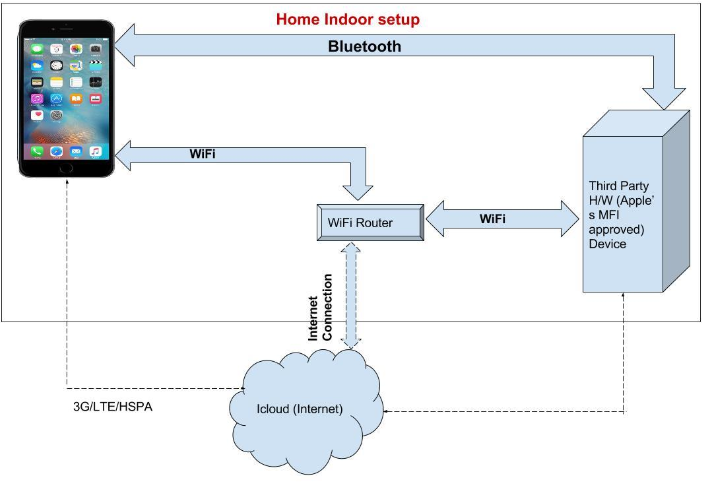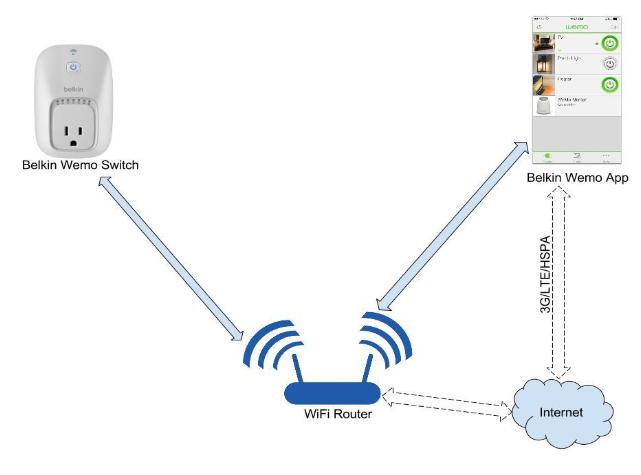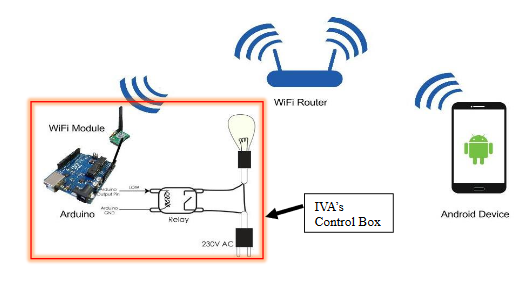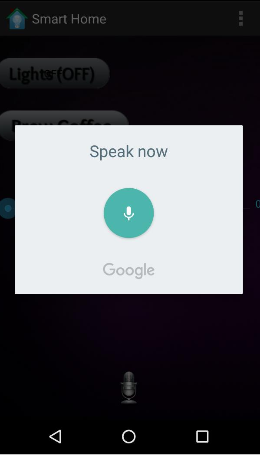ABSTRACT
This thesis presents the design of an original Intelligent Home Automation Architecture. My work was divided in two phases. The first portion was dedicated to acquiring a thorough understanding of the most successful and diffused Home – Automation commercial architectures. During this phase, I intended to gain a deep appreciation for the variety of organizations, capabilities, limitations, and potential areas of growth of the existing Home – Automation leading systems.
In order to acquire this knowledge, I had to use a reverse engineering approach. The reason for using this methodology arises from the fact that all the products considered in this study are commercially protected as industrial secrets. Consequently, it is not possible to obtain detailed descriptions of their ‘real’ architectures and internal operations. The second part of this thesis presents my personal contribution in the form of a prototype for a Smart – Home Architecture.
My design, called IVA (short for Intelligent Voice Activated) home automation, is primarily driven by the processing of natural language voice commands. I argue that this approach should be attractive to seniors, and people with limited range of mobility. In addition, the hardware needed to implement the system is commonly available and inexpensive. The most sophisticated device in my model is a smart phone, which in most cases, is already own by the prospective user.
LITERATURE REVIEW

Figure 2.1 Speculated architecture of Apple HomeKit.
Every application for a HomeKit – certified device typically contains two HomeKit related elements. First, the application will have some ability to link your HomeKit – certified hardware to a scene, room, or a zone. For example, your smart bulb system might have a “scene” system where you can create scenes like “relaxation”, “movie time”, or “morning routine”.
It might also give you the ability to group lights together into physical rooms or zones like “bedroom” or “upstairs”. The second HomeKit related element is the ability to link the application to the iOS voice assistant Siri; you’ll find an option somewhere in the menu system of the application that reads like “Enable Siri”, “Enable Siri HomeKit Integration”, likewise.

Figure 2.4 – Image of Belkin Wemo switch.
Belkin already had a name in networking devices, power, and cable accessories. Belkin came out with Wi – Fi based switch before companies like Apple, Google and Amazon came into the home automation business. The Wemo switches were launched in 2012. Back then, the Wemo switches were controlled with iPhone/iPod/iPad app. In January 2013, Belkin announced the support for Android OS. They also demoed their other home automation products line. New products such as smart motion sensors, IP cameras were displayed in Consumer Electronics Show (CES) 2013. They made huge interest regarding the capability of smartphones controlling home devices.

Figure 2.5 – Belkin Wemo speculated connection architecture.
Wemo switches work with a bit different architecture as compared to Apple’s HomeKit, and Amazon’s Echo. As per a Gigaom.com article, Belkin does not think a centralized hub is necessary for developing a smart home environment. Apple’s home kit and Amazon Echo both use a hub architecture to create their home automation platform.
Wemo switch uses a dedicated IP address to connect with a smartphone app. Each Wemo switch has an inbuilt Wi – Fi chip that can individually act as a TCP/IP server. The Wemo app is free to download through app stores. Once installed, the app asks user to connect with the Wemo’s own Wi – Fi access point. The user has to manually connect to the Wi – Fi access point of Wemo switch. The app then requests user to enter the main router’s login credentials.
IVA SMART HOME
Arduino is one of the most widely used prototyping microcontroller platform. It is built and tested on robust At mega controller series from Atmel Corporation. Arduino hardware platform already has the power, reset circuitry setup, as well as, circuitry to program and communicate with the microcontroller over USB. In addition, the I/O pins of the microcontroller are typically already fed out to sockets or headers for easy access (This may vary a bit with the specific model). This makes it one of the best and easiest to test a prototyping hardware. An overview with pinouts of Arduino Mega 2560 can be seen in Figure 3.1.

Figure 3. 2 – working of IVA on Wi – Fi technology.
We are calling the whole hardware setup as ‘Control Box’. There can be a number of Control Boxes in one house. They would work in symbiosis, and would be controlled with the help of a single app. Each Control Box would have its own unique IP address on the WLAN formed by a router. These IP addresses would be us ed to send and receive messages from IVA app on an Android device. The above Figure 3. 2 shows one such Control Box.
IVA’S HARDWARE

Figure 4.2 Wi – Fi setup showing Hi – Link’s HLK – Rm04 chip.
The HLK – Rm04 Wi – Fi module’s pins 20 and 21 are connected to Arduino Mega’s pins 18 and 19 for transmitting (TX) and receiving (RX) respectively. The TX pin of Wi – Fi module is connected to RX pin of the Arduino, so that the transmitting line is connected to receiving line of opposite circuit and vice – versa.
The Wi – Fi module has to be setup in such away that it can connect with an already available wireless network. There can be more than one Control Box with the setup. Each Control Box needs one Wi – Fi module in order to identify the box in the network. Moreover, this increases IVA’s access to other hardware in other rooms.
IVA’S SOFTWARE AND INTELLIGENCE
IVA has a very generic user – interface designed in XML. There are two toggle buttons to turn on/off devices, mainly a lamp or a coffee machine. There is another button that activates the voice listening capability of IVA through the Android device’s microphone. This button is placed at the bottom of the screen. There is a slider control, or track bar control in C#. Android calls it as ‘seek bar ’. The Android seek bar controls the voltage regulation of the regulator connected to Control Box.

Figure 5.3 – Screenshot of voice dialog box for speech – to – text.
There is a button with an image of a microphone at the bottom of the screen. When the button is pressed, IVA immediately gets into the listening mode. The user is prompted with a Google Voice command dialog box.
After the above screen is shown, the user can start speaking in natural language normal pitch voice. The system then converts the voice to text using powerful cloud servers dedicated to speech to text conversion. We will see the details of speech to text conversion further in the chapter.
CONCLUSION
The aim of this thesis was to study, assume, estimate and reverse engineer existing systems in order to design and develop our own home automation system. This goal was successful as IVA’s design was heavily influenced by the studied home automation architectures.
The network architecture resembles close to that of Belkin’s Wemo switch, whereas the voice commands and natural language processing is influenced by the Amazon’s Echo design. A device in a room idea was inculcated in IVA’s architecture by understanding how Nest thermostat works. Thus, the working prototype architecture of Intelligent Voice Activated Home Automation (IVA) was developed and tested based on combination of number of home automation systems designed and developed by few of the top innovating software and hardware companies like Google, Amazon, Apple, and Belkin.
The future scope for IVA can be huge. There are few ideas that we are discussing to make IVA more powerful, intelligent, scalable, and to become better overall for home automation.
Source: Cleveland State University
Authors: Mrunal Dipakkumar Bhatt
>> Top IoT Projects using Arduino for Engineering Students
>> WiFi based IoT Projects for Engineering Students
>> 200+ IoT Led Projects for Final Year Students
>> IoT based Networking Projects for Engineering Students
>> IoT Software Projects for Final Year Students
